Spatial
Warren and Mahoney Architects 86 Museum of New Zealand Te Papa Tongarewa 3 Te Papa Surrealist
-
Ngā Kaimahi / Team Members
Katherine Skipper, Jono Coates, Charlotte Hughes-Hallett, Charlotte Davy, Lizzie Bisley, Roseanne Kwan, Ginevera Ambrosia, Prue Donald -
Kaitautoko / Contributors
Human Dynamo, Resene, Caviller Bremworth, Markers Fabrication, Wilde Signs -
Client
Museum of New Zealand Te Papa Tongarewa
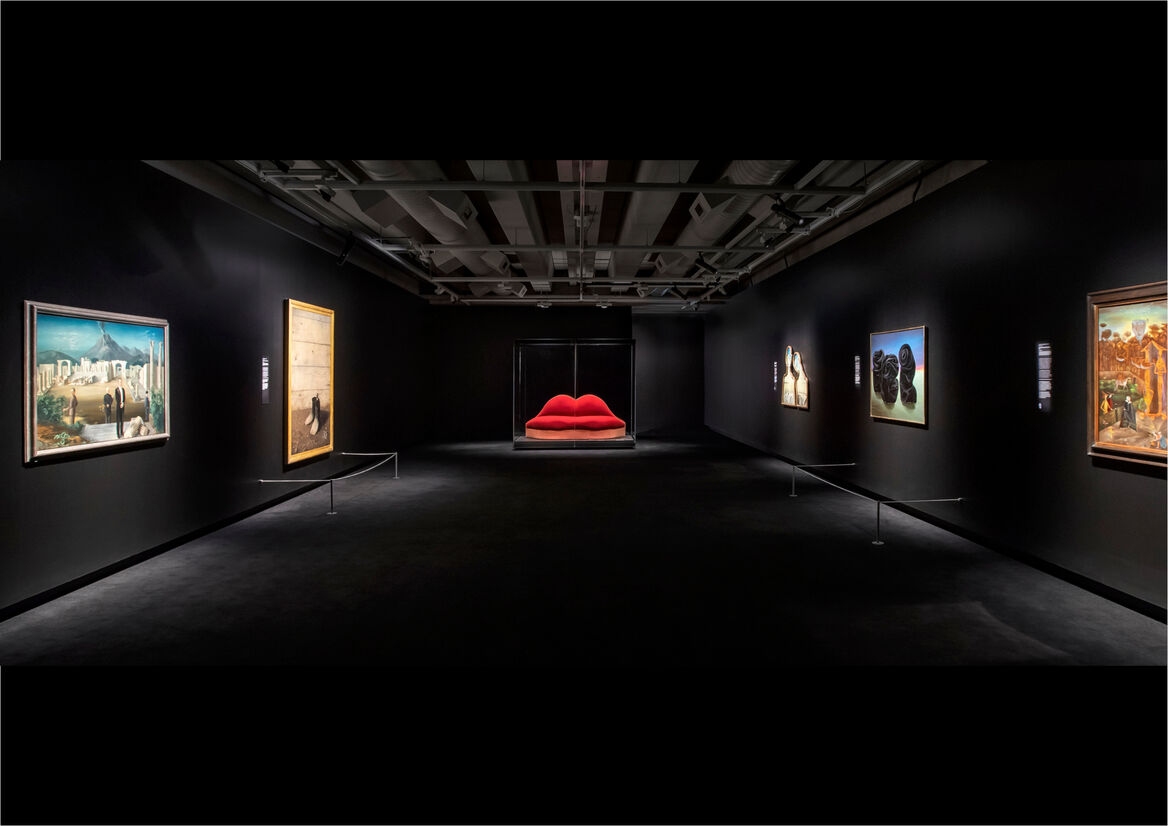

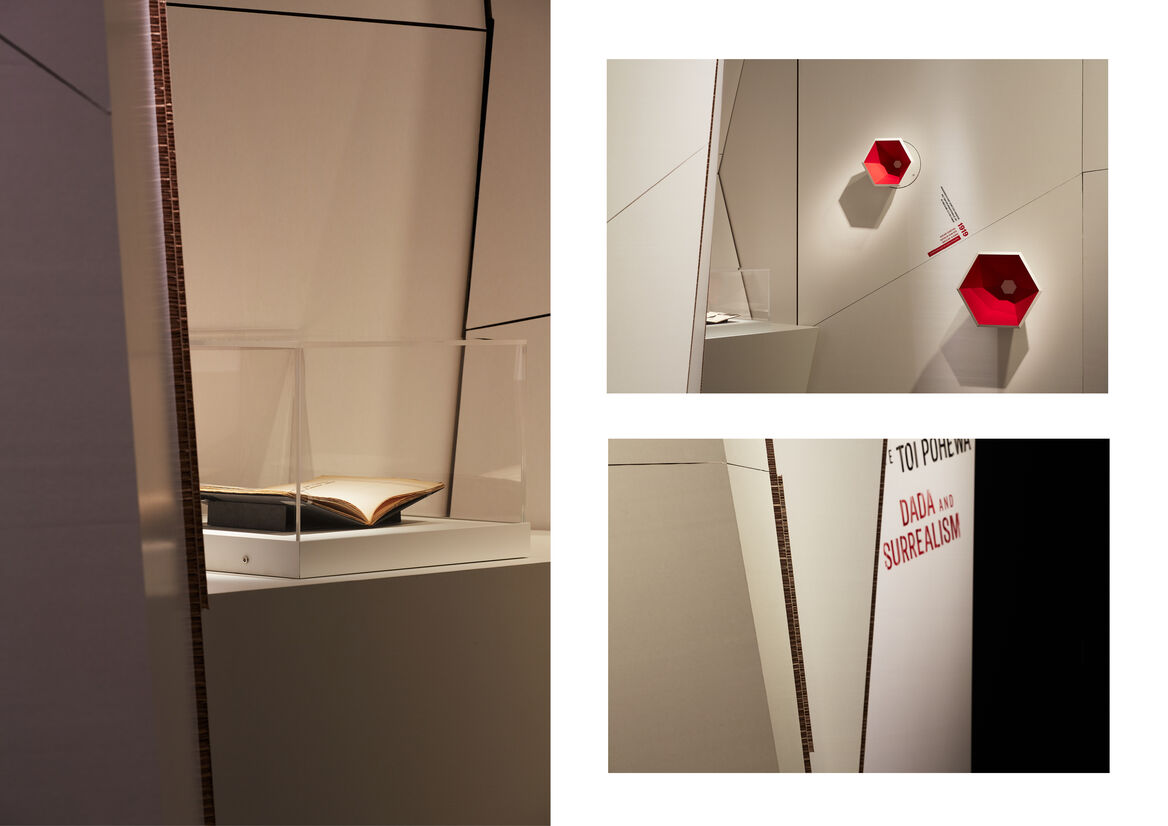
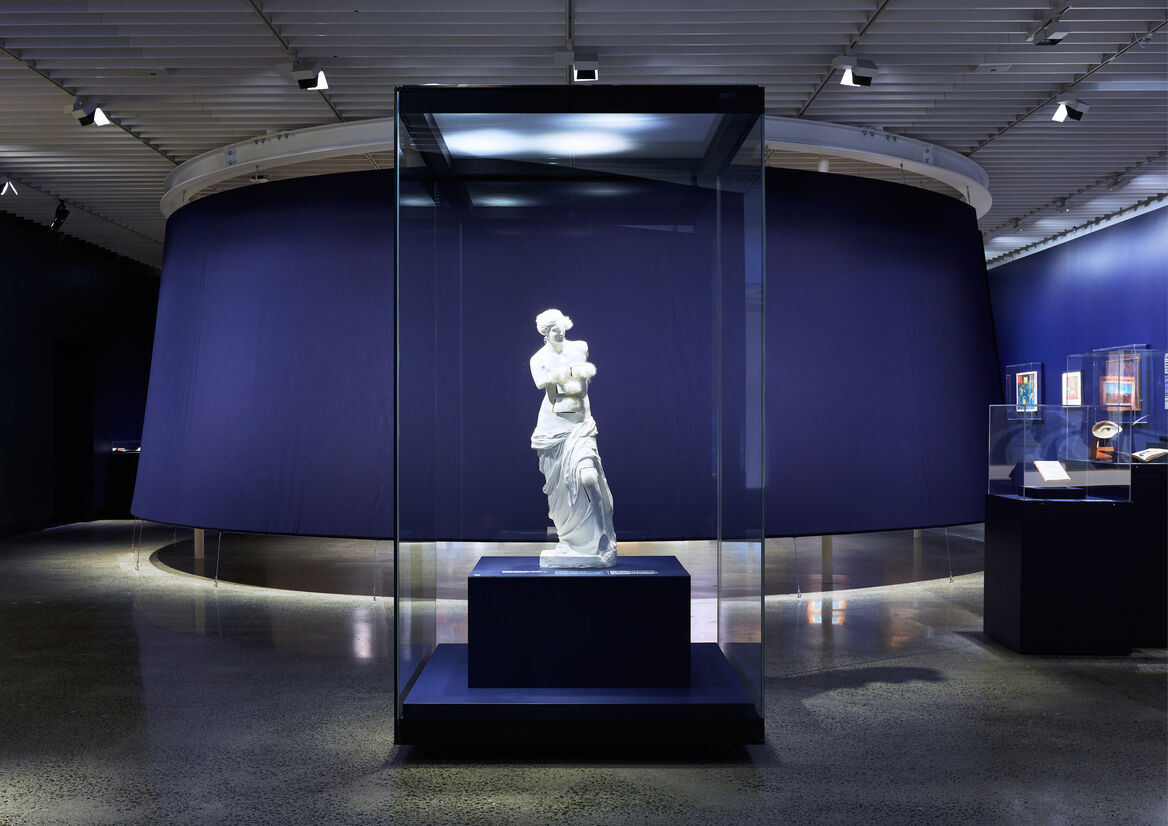
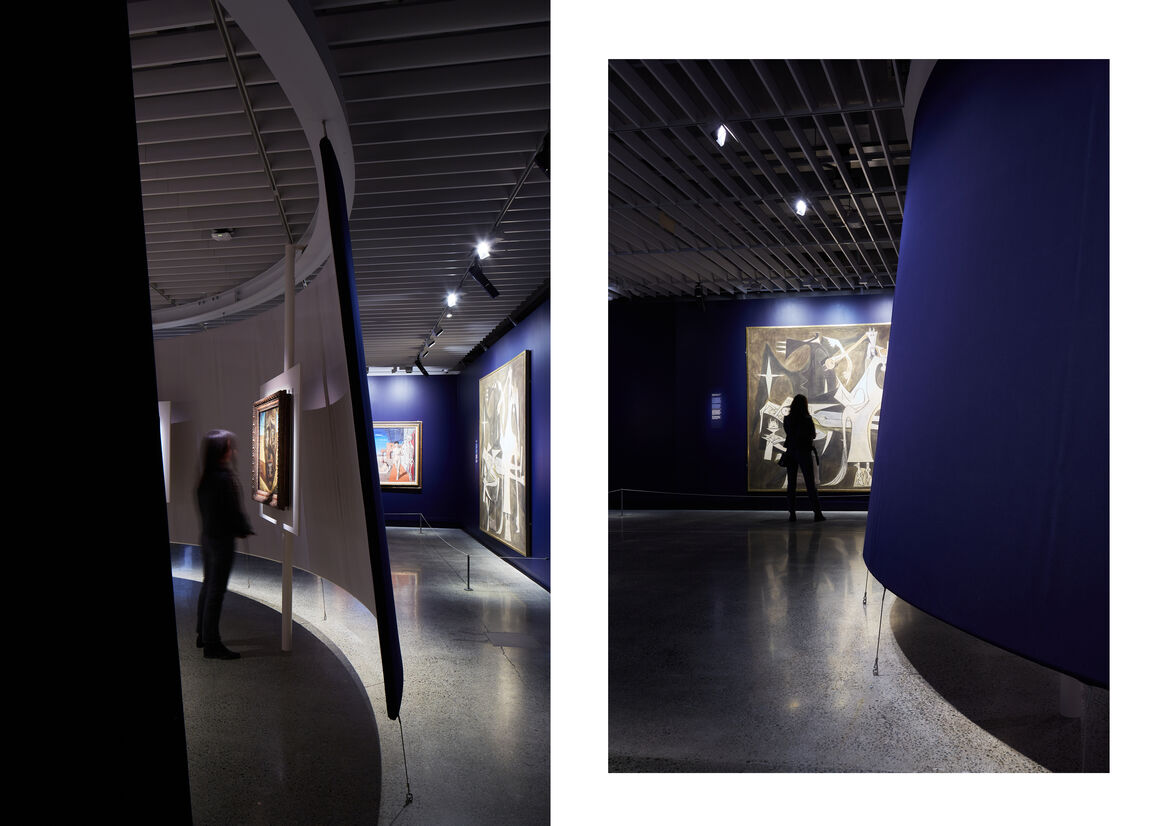
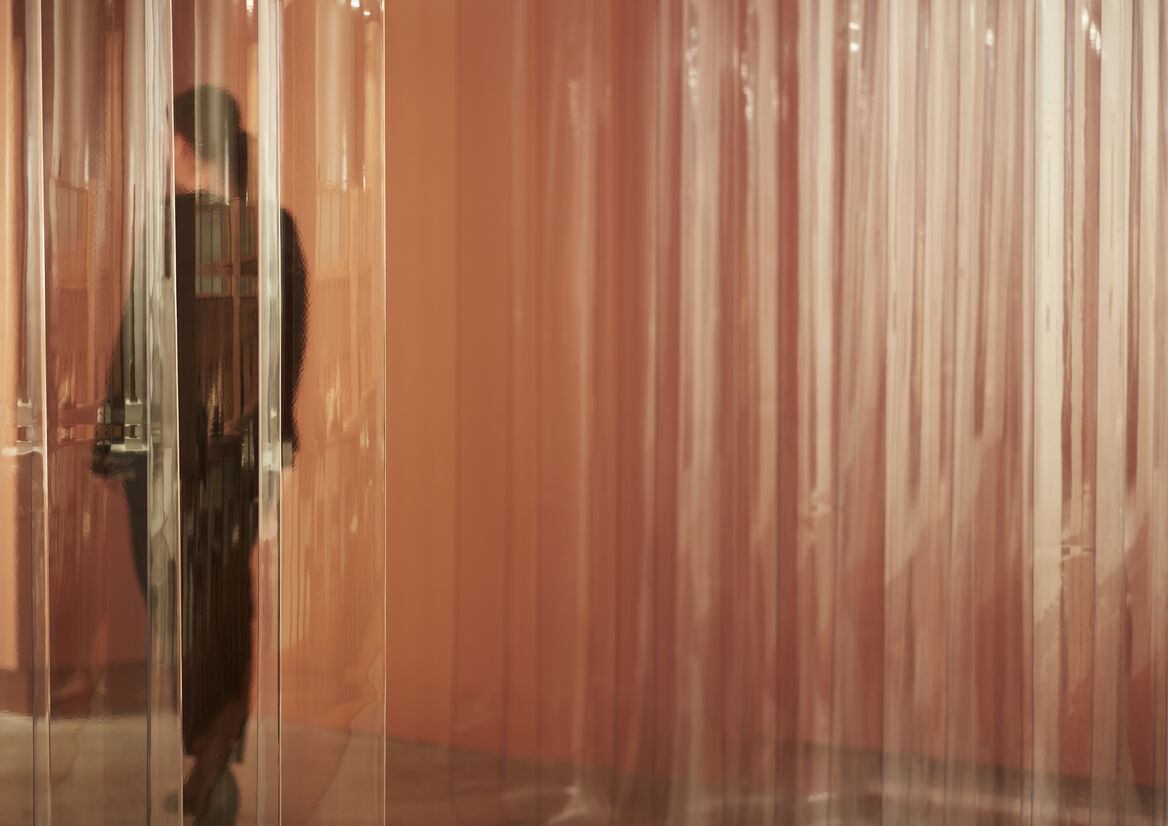
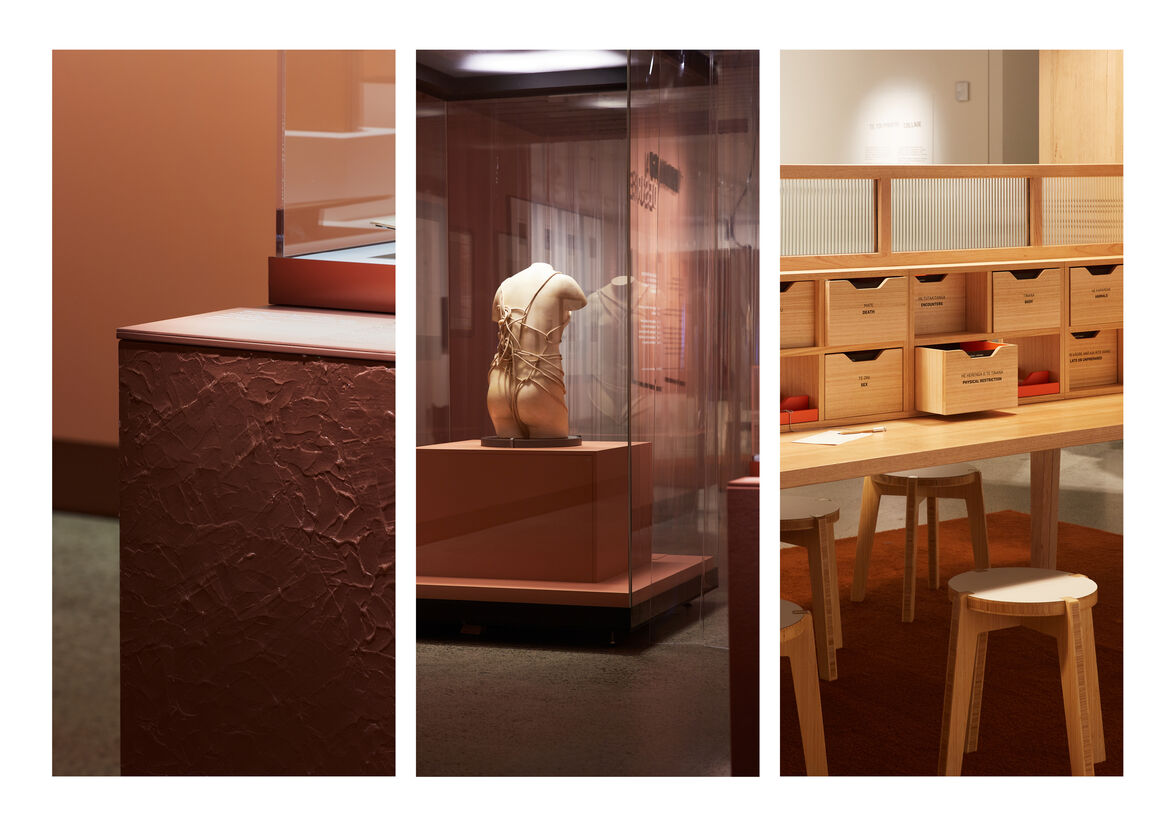
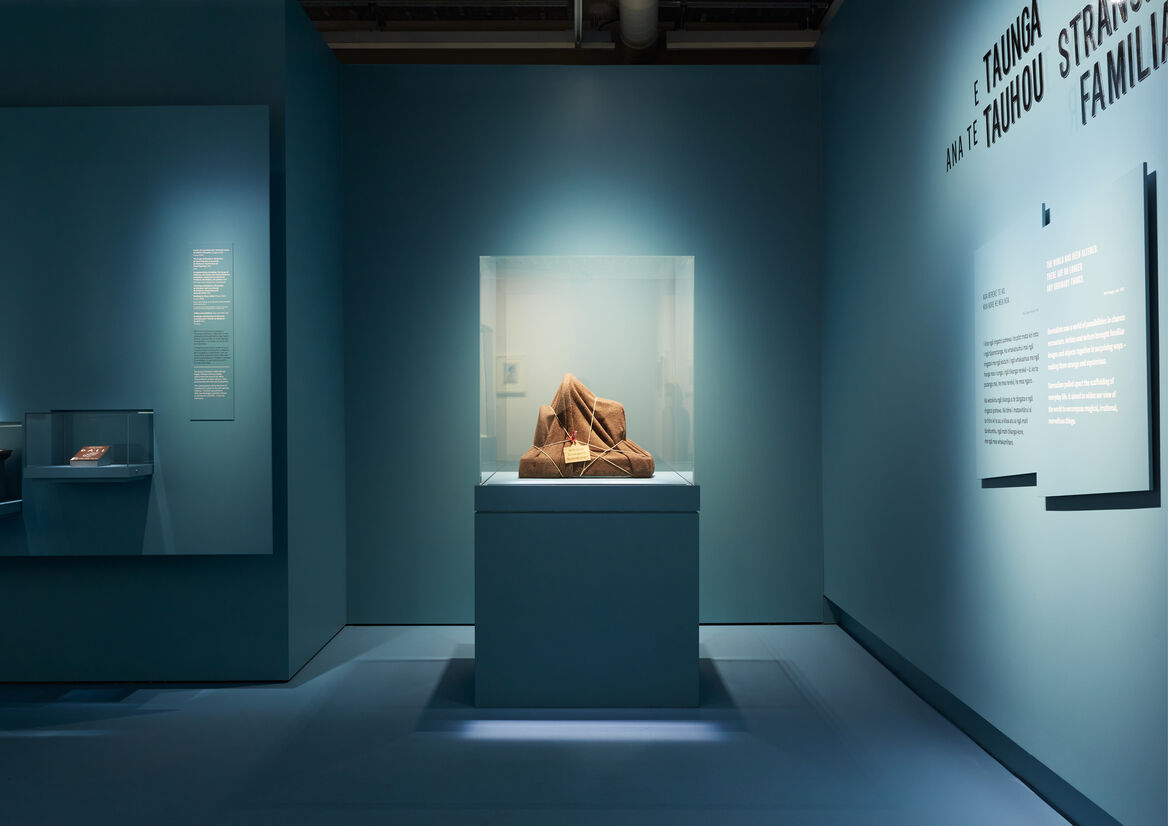
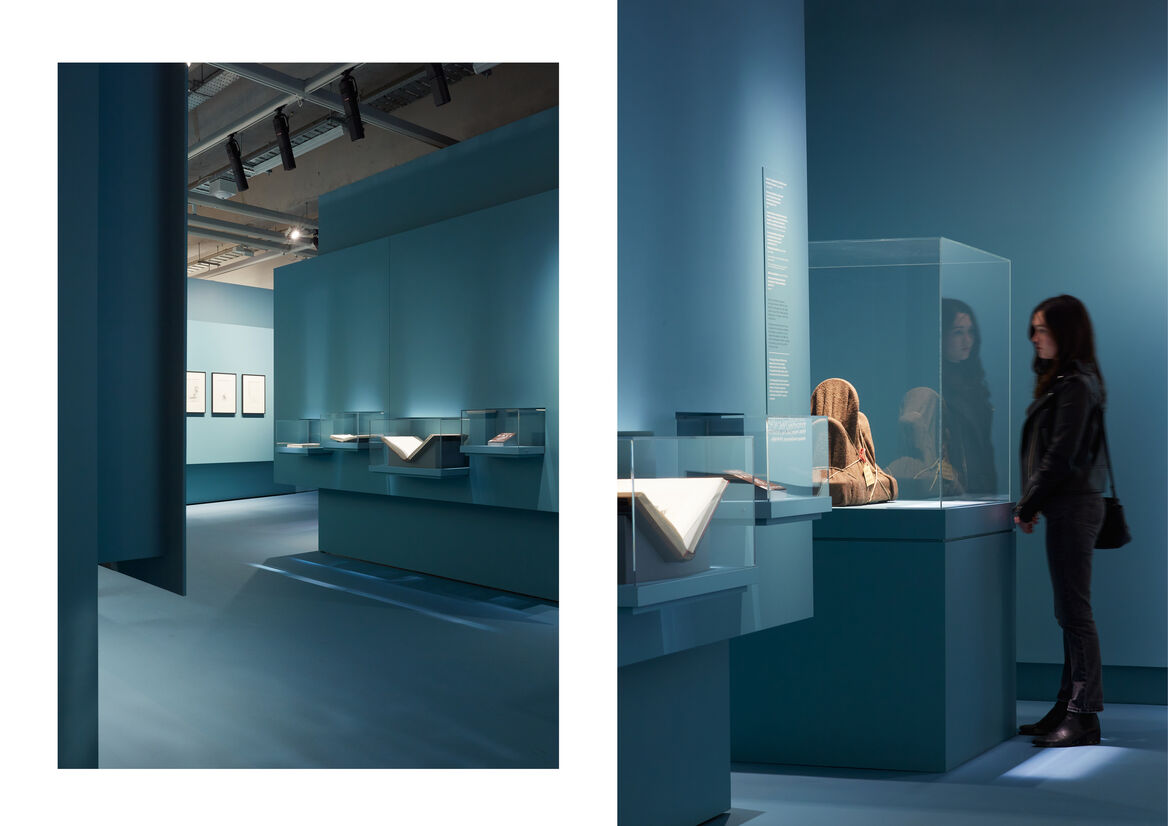
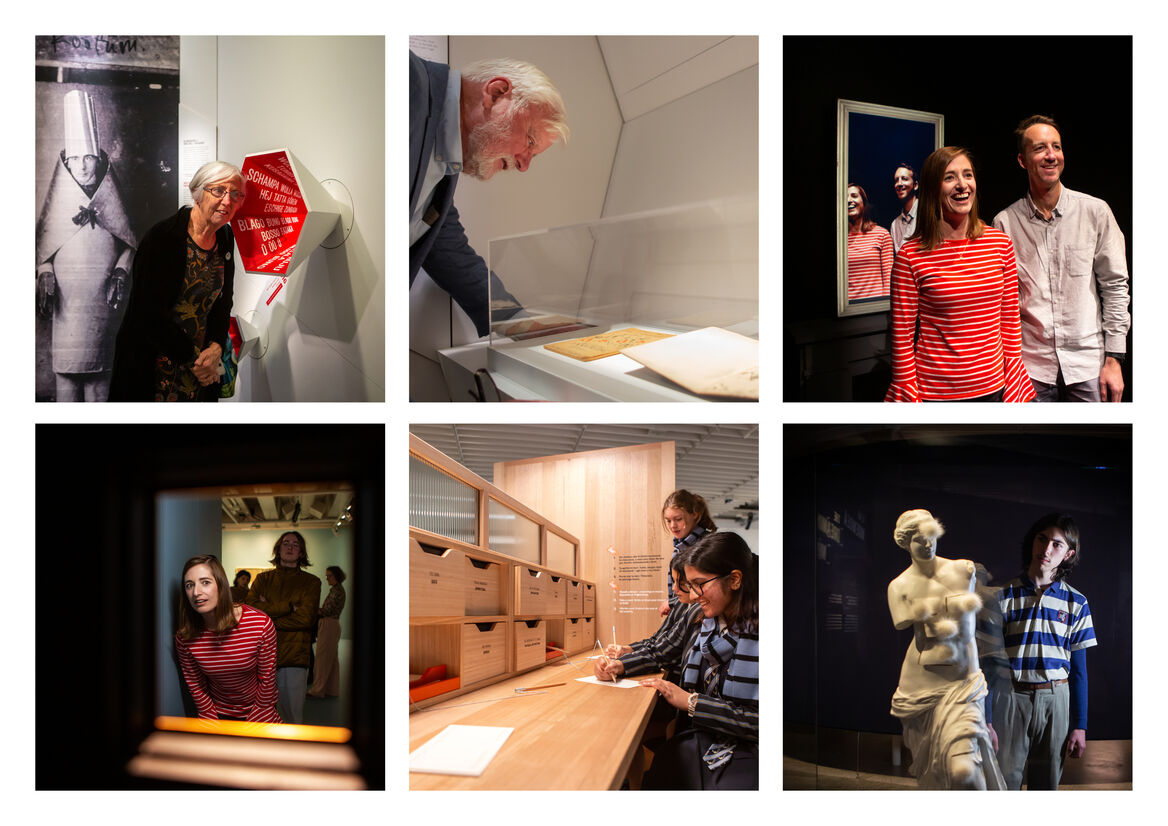
Description:
Surprising, delightful, confounding and unsettling – the exhibition’s design draws visitors into the marvellous world of Surrealism. The exhibition is divided into six thematic sections, each corresponding to a major aspect of Surrealist practice. It unfolds as a journey through six distinct environments. Each space uses colour, light, texture, sound, pace and spatial arrangement to embody and express Surrealist ideas. Within these different environments, a collection of 180 artworks is displayed. Careful attention is given to the relationships between the works in each gallery, as the spatial design shapes a narrative that unfurls across the exhibition as a whole.
Visitors enter the exhibition by stepping onto plush, black carpet that runs across to meet deep charcoal walls. Blending seamlessly together, carpet and walls take visitors immediately out of themselves – sound is dulled, eerie piano music envelops the space. Walking through a small antechamber, they step into a large gallery where six star artworks reveal themselves in a moment of spot lit drama. Salvador Dali’s Mae West Lips Sofa draws viewers down the room, setting the tone for the fantastical provocations that follow.
Visitors are introduced to the birth of Surrealism. Dada and Surrealism emerged in protest at World War One, and conventional gallery space is refashioned into something anarchic. Faceted walls and eddies reveal artworks, graphics and sound cones projecting Dada poems. The walls are exposed hexa-comb card, reflecting Surrealism’s adhoc, ephemeral nature.
At its heart, Surrealism wanted to merge the dreaming mind with the waking body. In The Dreaming Mind a deep inky blue envelops the perimeter of the space, while a levitating, circular structure sits at its centre. This floating room within a room guides visitors around the gallery, eventually inviting them to step inside. In contrast to the outer inky blue, the inside of the sphere is dressed in buttery white canvas. Paintings float off the walls, supported by posts. An otherworldly environment awakens body and mind.
In Chance and the Irrational, visitors are invited to become Surrealists. At a timber-joined office in the centre of the gallery, they are asked to record their dreams in an archive of the unconscious. The joinery is playful and communal – drawers pull open on either side of a long desk, encouraging visitors to record, file, and read each other’s dreams.
Desire explores the Surrealist fascination with sex and love. The view into the gallery is censored by hazy rows of PVC curtains. Smooth to the touch, the fetishist smell of PVC engulfs you as you walk into the room. Artworks are hung on luscious, fleshy tea rose walls. In the middle of the gallery three differently-textured plinths invite touch – echoing the tactility of the artworks around them.
Strangely Familiar is flooded in an impossibly blue pigment. As visitors enter, a series of prints are displayed around a chicane on a floating wall, then emerging into a wider room. Filled with paintings by René Magritte, this joyous space twists a traditional gallery into something mysterious and marvellous.